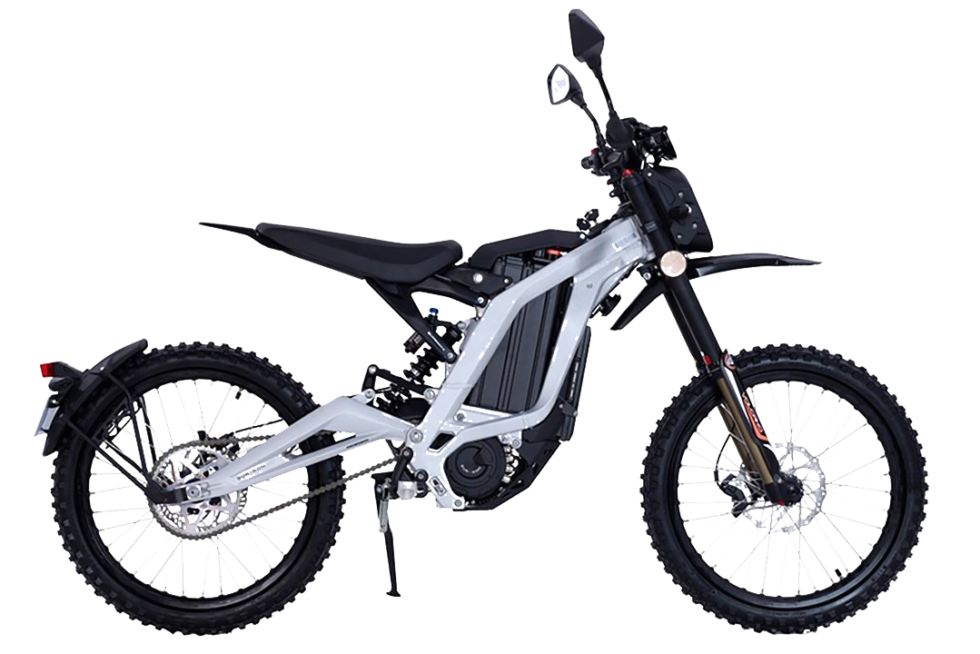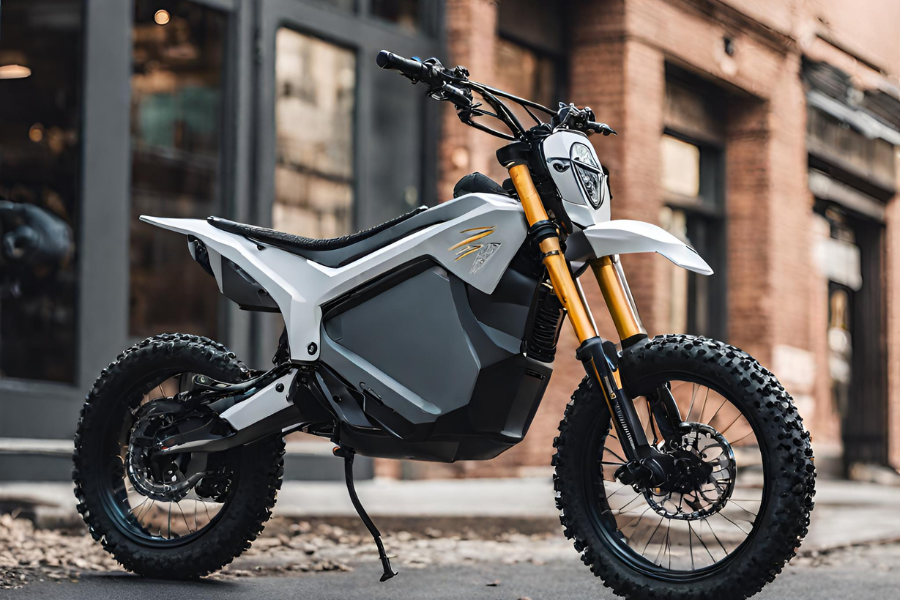Can you ride electric dirt bikes on the road? The answer, unfortunately, isn’t a simple yes or no. The legality of riding electric dirt bikes on public roads varies significantly depending on your location. Factors like state laws, vehicle modifications, and safety considerations all play a role in determining whether you can legally cruise your electric dirt bike on paved roads.
This article explores the complex world of electric dirt bikes and their roadworthiness, delving into the legal framework, safety concerns, and practical considerations involved. We’ll also discuss the environmental benefits and public perception surrounding this emerging form of transportation.
Vehicle Modifications

To legally ride an electric dirt bike on the road, you’ll need to make some modifications to ensure it meets the requirements of your local traffic laws. These modifications will primarily focus on adding safety features and ensuring the bike is visible to other road users.
The specific modifications you need will vary depending on your location and the type of electric dirt bike you have. However, some common modifications include:
Required Components
Here are some of the essential components that need to be added to an electric dirt bike to make it road-legal:
- Headlights: A bright and functional headlight is crucial for visibility at night. Ensure the headlight meets the minimum brightness standards specified in your region.
- Taillights: A taillight is essential for signaling your presence to other road users, especially when braking. The taillight should be clearly visible and should be connected to the brake system.
- Turn Signals: Turn signals are vital for communicating your intentions to other road users when turning. They should be clearly visible and operate correctly.
- Mirrors: At least one rearview mirror is necessary to allow you to see what is behind you. This is essential for safe driving and avoiding accidents.
- Horn: A functional horn is crucial for alerting other road users to your presence, especially in situations where a visual signal is not enough.
Obtaining a License Plate and Registration
Once your electric dirt bike is equipped with the necessary components, you’ll need to obtain a license plate and registration. The process for doing this varies by location, but it generally involves:
- Inspection: Your electric dirt bike will likely need to be inspected by a certified mechanic to ensure it meets the required safety standards.
- Application: You’ll need to fill out an application form with the relevant authorities. This form will typically ask for information about your bike, including the make, model, and VIN.
- Payment: You’ll likely need to pay a fee to cover the cost of the license plate and registration. The amount of this fee will vary depending on your location.
- Proof of Insurance: You’ll also need to provide proof of insurance for your electric dirt bike. This is a legal requirement in most jurisdictions.
Performance and Range: Can You Ride Electric Dirt Bikes On The Road

Electric dirt bikes offer a unique riding experience compared to their gasoline-powered counterparts. They deliver instant torque and are generally quieter, but they also have limitations in terms of range and charging infrastructure. Understanding these factors is crucial for riders considering making the switch to electric.
Performance Characteristics, Can you ride electric dirt bikes on the road
Electric dirt bikes excel in acceleration and torque delivery. Their electric motors provide instant power, allowing for rapid acceleration and impressive hill-climbing capabilities. This makes them particularly well-suited for technical trails and tight corners. However, they may lack the top-end speed of gasoline-powered bikes, especially on longer straightaways.
Range Limitations
The range of an electric dirt bike is primarily determined by battery capacity and riding conditions. Factors like terrain, riding style, and ambient temperature can significantly affect battery life. Riders should expect a range of 30-60 miles on a single charge, although this can vary depending on the specific model and usage.
Charging Infrastructure
Charging an electric dirt bike requires access to a power source. Most models come with a standard charger that plugs into a household outlet. However, charging times can vary depending on the battery capacity and the type of charger used. Some manufacturers offer fast chargers that can significantly reduce charging time.
Charging infrastructure for electric dirt bikes is still developing, but there are options available. Many riders charge their bikes at home, while others utilize charging stations at trailheads or dedicated electric vehicle charging locations.
Public Perception

Public perception of electric dirt bikes on roads is a complex and multifaceted issue. While the technology offers exciting possibilities, it also raises concerns about safety, noise, and the overall impact on traditional road users. This section will explore the various opinions and anxieties surrounding electric dirt bikes on roads, delving into the potential implications for road safety and traffic flow.
Common Concerns and Anxieties
The introduction of electric dirt bikes on roads has sparked debate and anxieties among various stakeholders. Some common concerns include:
- Safety Concerns: Electric dirt bikes are typically designed for off-road use, with their agility and high-powered acceleration potentially posing risks on roads designed for traditional vehicles. Some individuals worry about the potential for collisions, especially in high-traffic areas or when sharing the road with cars, trucks, and other vehicles.
- Noise Pollution: While electric dirt bikes are quieter than their gasoline-powered counterparts, they still generate a distinct hum or whine that may be perceived as intrusive or disruptive by some road users, especially in residential areas.
- Impact on Traffic Flow: The maneuverability and agility of electric dirt bikes may lead to concerns about their ability to weave through traffic or unpredictably change lanes, potentially disrupting the smooth flow of vehicles on roads.
- Legal and Regulatory Issues: The legality of electric dirt bikes on roads varies widely depending on location and specific regulations. Uncertainty about legal requirements can contribute to anxieties about the potential for enforcement issues and conflicts with authorities.
Impact on Road Safety and Traffic Flow
The impact of electric dirt bikes on road safety and traffic flow is a topic of ongoing debate and research. While electric dirt bikes offer potential advantages in terms of reduced emissions and noise pollution, their introduction on roads also presents challenges:
- Potential for Increased Accidents: The unique characteristics of electric dirt bikes, such as their high acceleration and agility, could potentially lead to an increase in accidents, especially if riders are not adequately trained or experienced in navigating road conditions.
- Impact on Traffic Flow: The unpredictable nature of electric dirt bikes on roads could potentially disrupt traffic flow, especially in congested areas. Their ability to weave through lanes or suddenly change direction could lead to confusion and potential hazards for other road users.
- Pedestrian Safety: Electric dirt bikes, with their smaller size and potentially high speeds, may pose a greater risk to pedestrians compared to traditional motorcycles. Their ability to maneuver through traffic and their potentially less visible nature could increase the likelihood of pedestrian accidents.
While the legal landscape surrounding electric dirt bikes on roads is evolving, it’s clear that these innovative machines offer a compelling alternative to traditional motorcycles. By understanding the regulations, safety protocols, and practical aspects of riding electric dirt bikes on roads, riders can make informed decisions and contribute to a greener and more sustainable future of transportation.
Popular Questions
What are the main advantages of electric dirt bikes compared to gasoline-powered motorcycles?
Electric dirt bikes offer several advantages over their gasoline-powered counterparts, including reduced emissions, quieter operation, and lower maintenance costs.
How do I know if electric dirt bikes are legal in my area?
The best way to determine the legality of electric dirt bikes in your area is to consult your state’s Department of Motor Vehicles or local law enforcement.
Are electric dirt bikes as powerful as gasoline-powered dirt bikes?
Electric dirt bikes can offer comparable performance to gasoline-powered models, especially in terms of acceleration and torque. However, range and charging times can be limitations.